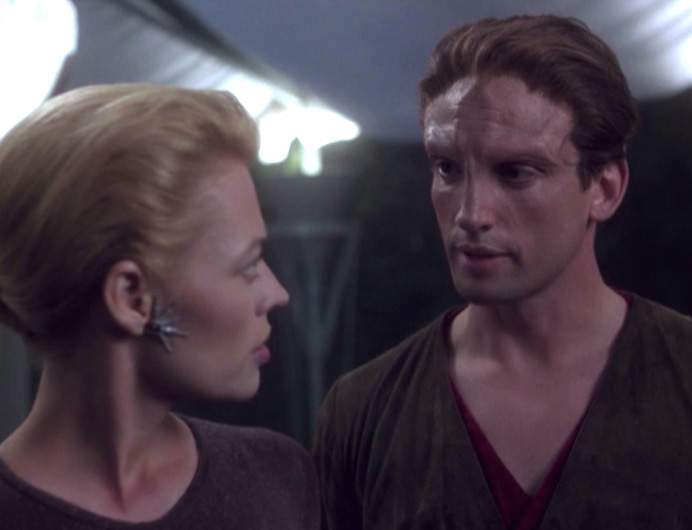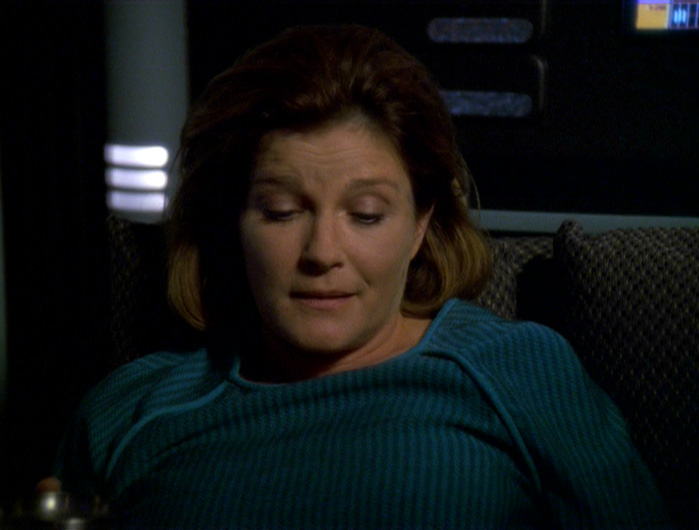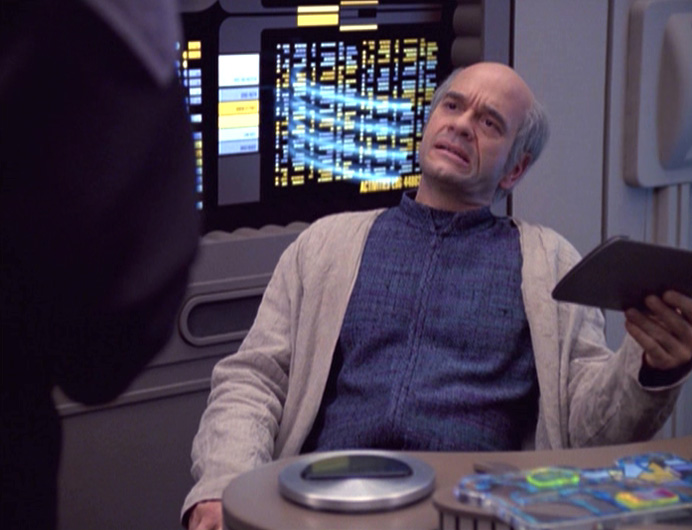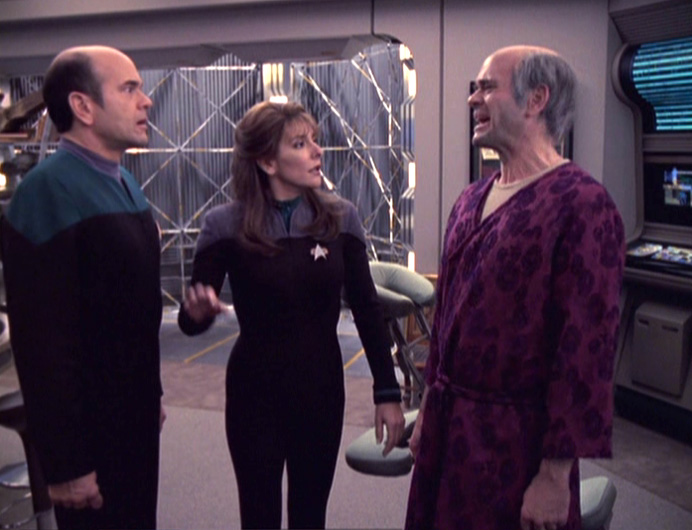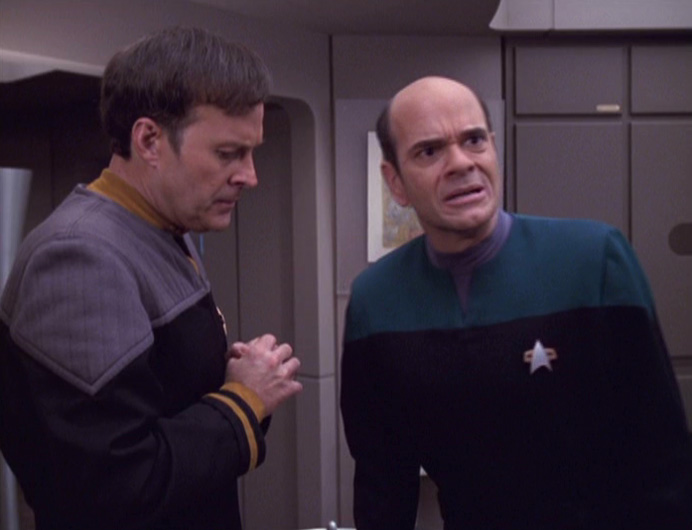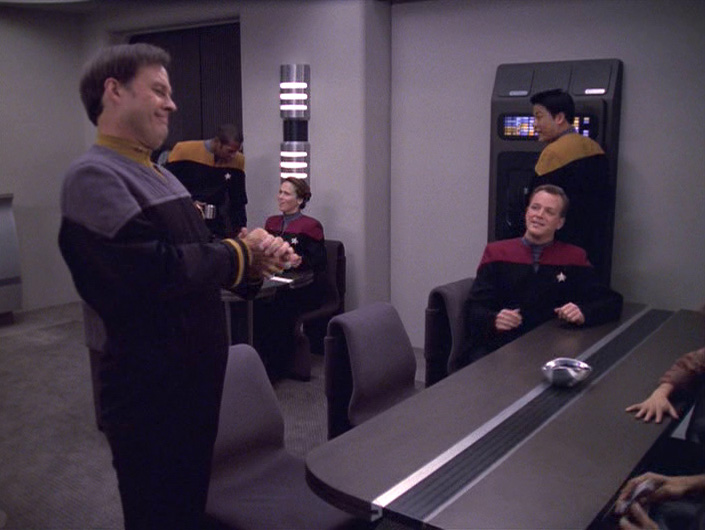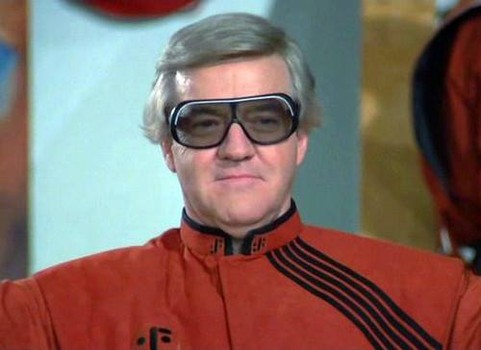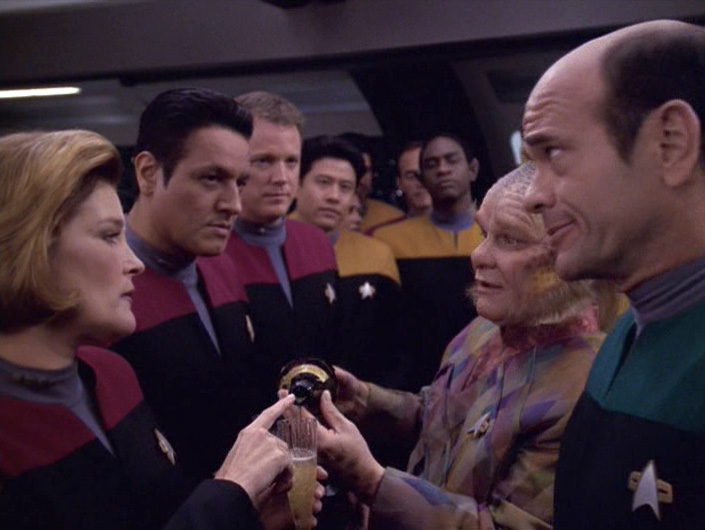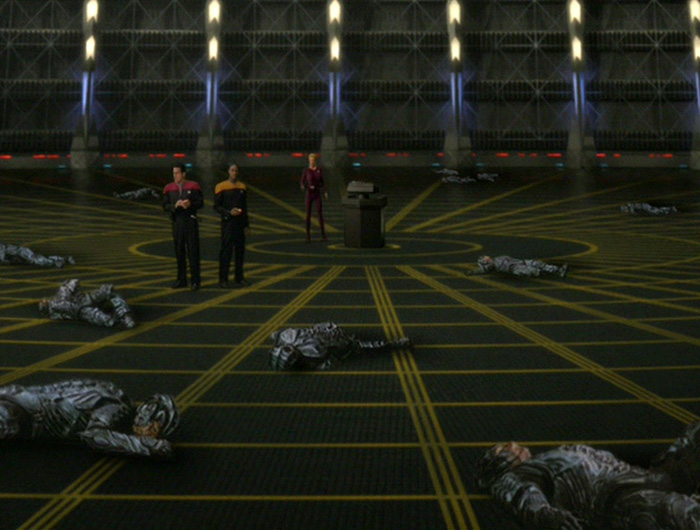
Voyager comes across a Hirogen space station where holographic prey rose up and killed almost all of their oppressors before escaping. Realizing that the holograms were the result of holographic technology Voyager gave the Hirogen back in “The Killing Game”, Janeway decides to help the Hirogen hunt the holograms, who are made up of recreations of Alpha Quadrant races. They steal the Doctor’s program, and initially convince him to join their cause — to the point where he betrays Janeway to help their ship escape. In the process, the hologram leader Iden (Jeff Yagher), a recreated Bajoran, abducts Torres to complete a self-sustaining holo-generator that he plans to put on a planet that humanoids can’t live on. The Doctor goes back and forth as far as believing Iden until he finally sees Iden wants to start a religion with him as a messiah and after he kills two innocent people and then — in the episode’s most over-the-top moment — sets up the Hirogen to be hunted by the holograms. Eventually, the Doctor kills Iden (using the largest gun I’ve ever seen on Star Trek) and Janeway lets the other holograms go on their way.
Why it’s important
Well, we’ll start with the good. This episode does pave the way for the hologram rights stuff that’s the biggest continuing plot line in season seven. We’ll see more in “Author, Author” in our next review. Beyond that, it’s good (if you don’t think about it too hard) that the Hirogen pop up again and Janeway’s decision back in “The Killing Game” is shown to have some bad consequences. Looking back, we probably should have reviewed that two-parter. Oh, well.
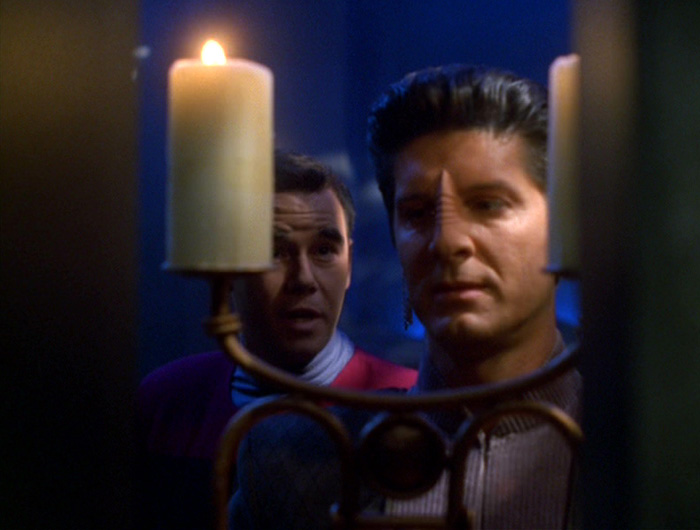
What doesn’t hold up
The biggest problem is that the Hirogen shouldn’t be anywhere near Voyager at this point. The Hirogen aren’t shown to have transwarp capabilities (they come across as primitive in many ways) so it’s unlikely that Voyager — which has moved about 30,000 light years since we last saw the Hirogen in season four — would be in Voyager’s current flight path. But, then, this is Voyager, so I should probably just shrug it off.
Beyond that, the episode takes Iden from an interesting and multi-layered half-villain to a megalomaniac to a revenge-thirsty bore. I could have swallowed the idea that he thinks he should be the center of a new religion, but it would have been more interesting if he had been somewhat forced to send the Hirogen to the planet, where the holograms would have fought them. The irony should have been that he had to make the hunters become the hunted, as opposed to him getting his jollies from it.
Janeway also sort of washes her hands of the situation too easily as the episode ends, particularly as torn up and dead set she was about fixing things earlier. With Iden gone, she sort of leaves the holograms with the recreated Cardassian engineer Kejal (Cindy Katz) in charge. There’s no real guarantee that Iden was the only problem (the episode sort of shows that he wasn’t) and that the Hirogen will actually stop hunting them (despite some fast talk from Neelix that is viewed as a solution).
In a couple stray items, it was ridiculous that the holodeck recreation included a Borg drone, who apparently works with the other Alpha Quadrant holograms. And there’s a weird line from Chakotay in part one about how trading technology is something Voyager had to do to survive in the Delta Quadrant. Must have been a directive after the Kazon years …
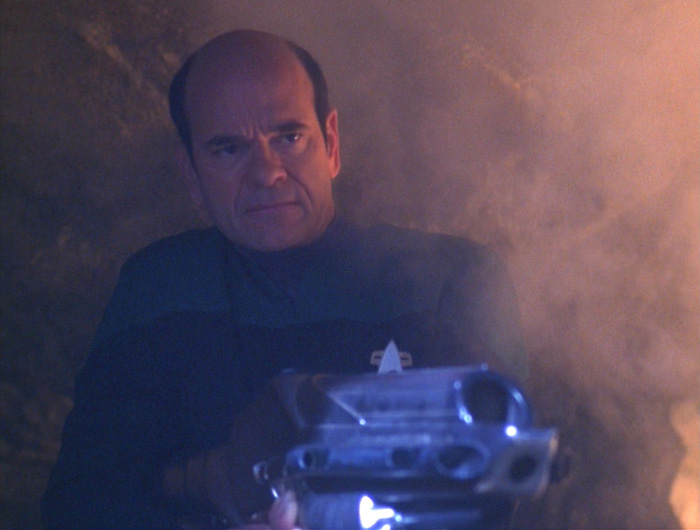
Final thoughts
There’s some good stuff here, mostly because Janeway does some important self-reflection and because Picardo, Mulgrew, Dawson (in good interchanges with Picardo and the holograms) and Yagher, in his portrayal of Iden, bring their A games. I’d even say it was a very good episode, despite the continuity issues, if not for Iden’s trip into goofiness as the episode ends.
Coming next week …
More holographic rights in our second-to-last Voyager review.

